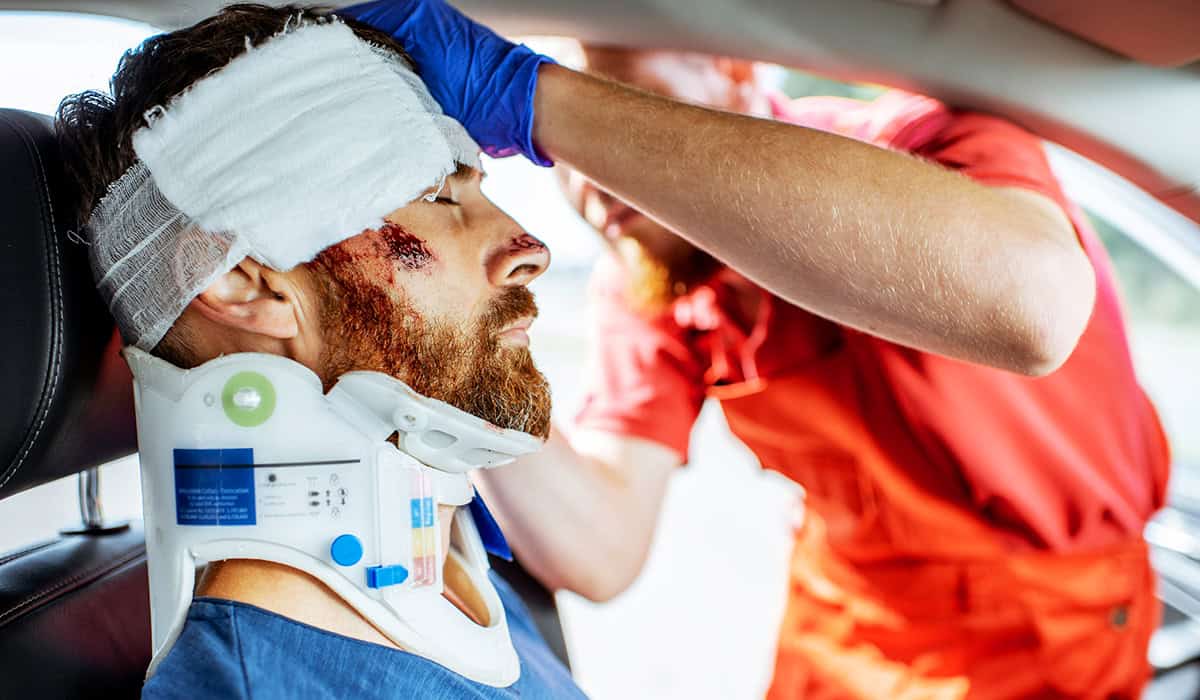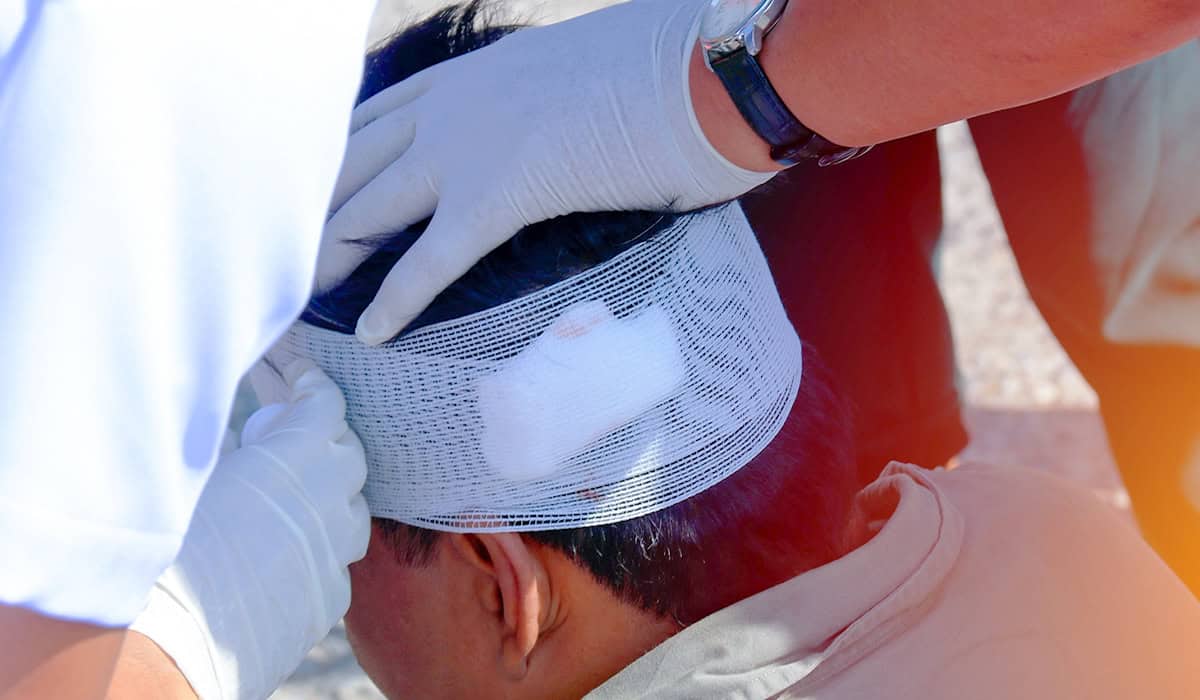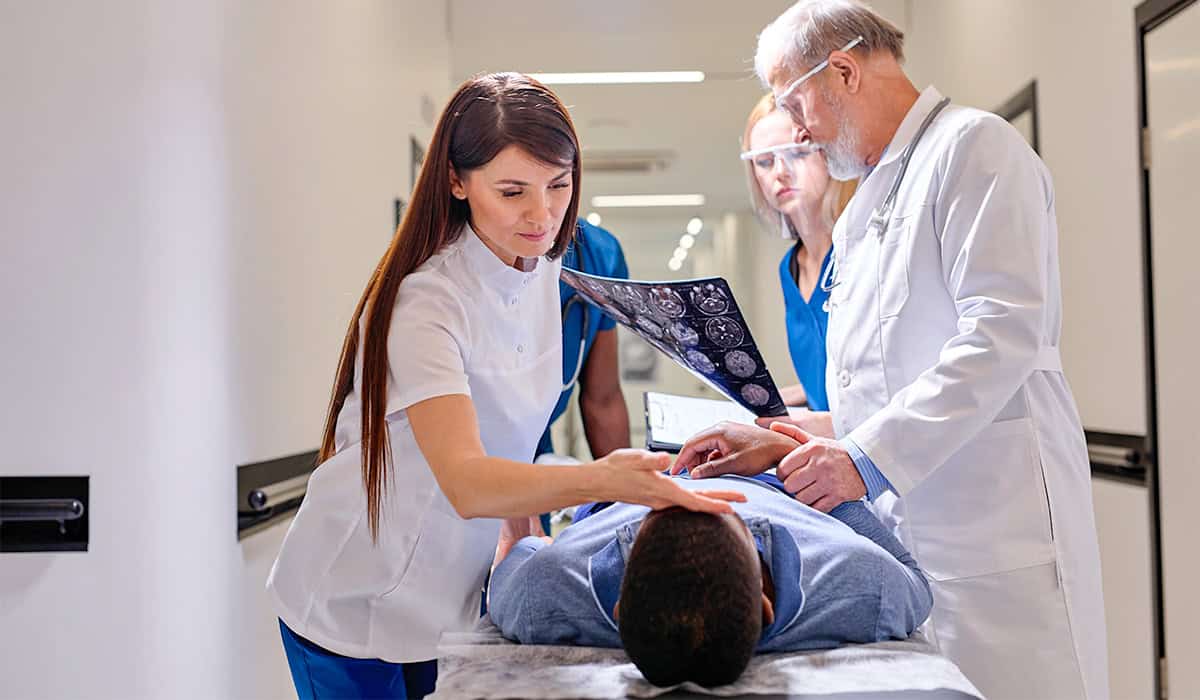
A compression head injury, or cerebral compression, is a swelling or bleeding in the skull which puts pressure on the brain. If you are treating someone for a compression head injury, you must call emergency services and keep the casualty stable.
What are the signs and symptoms of a compression head injury?

There are several symptoms of a compression head injury that will allow you to be able to recognise the need for help straight away:
- Intense headache.
- Possible previous head trauma.
- Flushed, dry skin.
- Unequal pupils.
- Drowsy and declining level of consciousness.
- Fits (as the condition worsens, the casualty may suffer from fits).
- Slow, strong pulse.
- Slow, noisy breathing.
The difference between a concussion and a compression

A concussion is a temporary head injury, where the brain has been shaken or hit against the inside of the skull. They tend to come about from an injury to your head. They can cause short term memory loss, a mild headache and the person’s skin to become pale and clammy.
Whereas a compression head injury can occur in a similar way, or it can be from a medical condition such as a stroke or brain tumor. It can become progressively worse if untreated, in some cases leading to death. The symptoms are slightly different as well, although with a compression injury they may not appear immediately.
Immediate first aid treatment

If you are treating someone with a cerebral compression, call emergency services immediately, particularly if they have lost consciousness or are struggling to breathe.
There are several things that need to be done when providing immediate first aid to someone with a suspected compression head injury:
- If they are still conscious, help them to lie down with their head and shoulders slightly elevated.
- Check their responsiveness and their pulse.
- Check their breathing and maintain an open airway. If they are struggling be prepared to begin CPR.
- Keep them calm until an ambulance arrives.
Our courses
If you would like to learn more and get training to be able to deal with unconscious casualties or people suffering from head injuries, we offer several courses that can help:
- Basic First Aid at Work (1/2 Day)
- Emergency First Aid at Work – QNUK Level 3 & RQF (1 Day)
- First Aid at Work – QNUK Level 3 & RQF (3 Days)
- Sports First Aid (1 Day)
Read our other blogs for more information on first aid or contact us for further advice and information on our courses.
